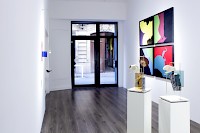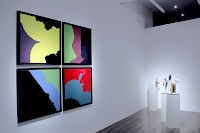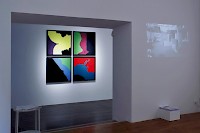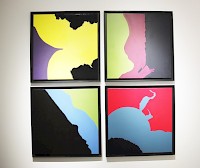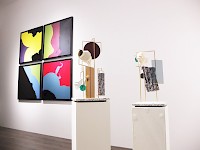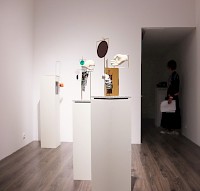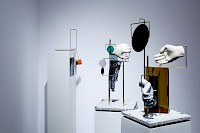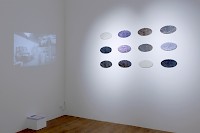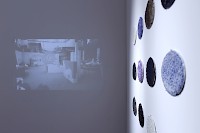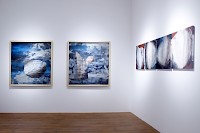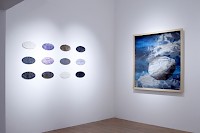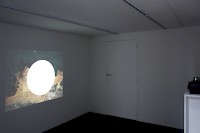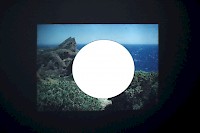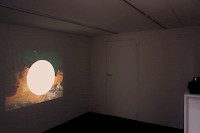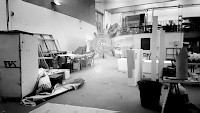Exhibition
A Cultural Interpretation of Stone PART I
November 2019
30. 11. 2019 – 11.01. 2020
VERNISSAGE: 30.11. 2019, H18
Artists :
David Casini - Vincent Pajot - Stéphane Raynal - Ludovic Sauvage - Gilles Zark
Curator : Marta Jecu
This exhibition is the 1st part of a larger project dedicated to artistic approaches to stone and is the outcome of a double fascination: on one hand for the persistence of certain materials in art – the most paradigmatic being stone, and on the other hand for the transformability and hybridity of this matter. As the oldest support of information in humanity and a primordial artistic matter, stone exercises a vivid fascination until today.
The exhibition intends to offer an interdisciplinary approach to stone, which analyses it from different perspectives, as the product of cosmic, geological and (more recently) technological accidents and as a generator of cultural content. In the works presented in this exhibition the artists explore stone as a medium to access the past and its sedimented strata of information, seen as a fundament of the reality we live in: if it is a geological, archeologic, cultural. At the same time, it is fascinating to see that stone is a ubiquitous contemporary presence, a hybrid entity, between real and virtual, concrete and digital.
Vincent Pajot works on scientific astronomical data that were essential in determining the origin of cosmic structures. As can be read in the exhibition sheet accompanying his installation, he transposed the Cosmic Microwave Background, also known as the fossil radiation (an electromagnetic radiation emitted at an early stage of the universe) into a perceptible form in his wall installation. The delicate porcelain pieces are obtained by translating the temperature differences of this radiation into height differences. The accompanying video-projection launches a conceptual joke that imagines an asteroid entering the artist's atelier and causing physical and mental disruption of the lived reality.
Stephane Raynal offers a geological perspective, where the earth is presented from inside as a conglomerate of fossils and immemorial vestiges. Earth, metal and stone seem both organic and inorganic, emerging from a constant cumulation of matter and time into a scale-less, infinite and indefinite mass, which is at the same time generating unpredictable forms and substances.
Gilles Zark proposes a bird's view on territory, which generates 'images' of land – if it is interior images, like hallucinations rendered by our imagination or 'representations' mediated by technological information. In this series of paintings, Cartes sans lieu, what he calls 'non-cartographed territories' keep the bi-dimensionality of cartographic representations, but depict new types of colours and vibrations than the ones we usually associate with territory. These are the result of the territory perceived in movement, at variating speeds, through digital and high technological devices – which alter our imaginary and produce a new monumentality.
Ludovic Sauvage works in Plein Soleil on stone landscape in the Marseille region, in an atemporal dimension connected to leisure and contemplation. The blank spot on his images exercise on the viewer a vivid fascination that reminds of the punctum of Roland Barthes, the invisible point of interest and of mystery present in every photography. At the same time it reminds also of the scotoma – the tiny blind point in the human eye, which doesn't see. Same as the scotoma, the images of Ludovic Sauvage, demonstrate that perception contains non-perception, and that the visible carries loads of invisible information, histories and temporalities from which only an atmosphere can remain.
David Casini reloads the importance of stone in an art historical perspective, focusing on the Renaissance. In his series of 3 sculptures Geometries for an Inverted Canon, he transposes the 1463 ensemble Lamentation over the Dead Christ by Niccolò dell’Arca, housed in the Church of Santa Maria della Vita in Bologna into a complex installation, based on geometric and gestural principles. Stone and marble in particular stay at the centre of this work. Renaissance marbles (or their painted reproductions integrated into architecture) were at that time a reference to the aesthetics of antiquity and its philosophy and were among the first non-figurative autonomous paintings in Western art. Similarly in his wall piece, an allusion to Piero della Francesca's - Madonna della MIsericordia (1445-1463), David Casini transposes around a stone that seems extracxted from a cabinet of curiosities, abstract information into contemporary conceptual aesthetics.
